Synthesis of a Dehydroabietyl Derivative Bearing a 2-(2′-Hydroxyphenyl) Benzimidazole Unit and Its Selective Cu2+ Chemosensing
Abstract
:1. Introduction
2. Results and Discussion
3. Experimental
3.1. General
3.2. Preparation of Methyl 2′-hydroxyphenyl-12-bromo-13,14-imidazolyl-deisopropyldehydroabietate (2).
4. Conclusions
Acknowledgements
Supplementary Materials
References
- Choquesillo-Lazarte, D.; Brandi-Blanco, M.; García-Santos, I.; González-Pérez, J.M. Interligand interactions involved in the molecular recognition between copper(II) complexes and adenine or related purines. Coord. Chem. Rev. 2008, 252, 1241–1256. [Google Scholar] [CrossRef]
- Zeng, X.; Dong, L.; Wu, C. Highly sensitive chemosensor for Cu(II) and Hg(II) based on the tripodal rhodamine receptor. Sens. Actuat. B: Chem. 2009, 141, 506–510. [Google Scholar] [CrossRef]
- Kim, M.H.; Noh, J.H.; Kim, S. The synthesis of crown ether-appended dichlorofluoresceins and their selective Cu2+ chemosensing. Dyes Pigments 2009, 82, 341–346. [Google Scholar] [CrossRef]
- Xi, P.X.; Dou, J.Y.; Huang, L. A selective turn-on fluorescent sensor for Cu(II) and its application in imaging in living cells. Sens. Actuat. B: Chem. 2010, 148, 337–341. [Google Scholar] [CrossRef]
- Rodembusch, F.S.; Leusin, F.P.; Bordignon, L.B.; Gallas, M.R. New fluorescent monomers and polymers displaying an intramolecular proton-transfer mechanism in the electronically excited state (ESIPT) Part II. Synthesis, spectroscopic characterization and solvatochromism of new benzazolylvinylene derivatives. J. Photochem. Photobiol. A: Chem. 2005, 173, 81–92. [Google Scholar] [CrossRef]
- Wiss, J.; May, V.; Ernsting, N.P.; Farztdinov, V.; Mühlpfordt, A. Frequency and time-domain analysis of excited-state intramolecular proton transfer. Double-proton transfer in 2, 5-bis(2-benzoxazolyl)-hydroquinone. Chem. Phys. Lett. 2001, 346, 503–511. [Google Scholar] [CrossRef]
- Costela, A.; García-Moreno, I.; Mallavia, R.; Amat-Guerri, F.; Barroso, J.; Sastre, R. Proton-transfer lasers based on solid copolymers of modified 2-(2′-hydroxyphenyl)benzimidazoles with methacrylate monomers. Opt. Commun. 1998, 15, 89–95. [Google Scholar] [CrossRef]
- Fournier, T.; Pommeret, S.; Mialocq, J.C.; Deflandre, A.; Rozot, R. Femtosecond laser studies of excited state intramolecular proton transfer in an ulstraviolet-filter molecule. Chem. Phys. Lett. 2000, 325, 171–175. [Google Scholar] [CrossRef]
- Holler, M.G.; Campoa, L.F.; Brandelli, A.; Stefani, V. Synthesis and spectroscopic characterisation of 2-(2-hydroxyphenyl)benzazole isothiocyanates as new fluorescent probes for proteins. J. Photochem. Photobiol. A: Chem. 2002, 149, 217–225. [Google Scholar] [CrossRef]
- Huang, L.; Wang, K.Z.; Huang, C.H. Synthetic and electroluminescent properties of two novel europium complexes with benzimidazole derivatives as second ligands. Synth. Metal. 2002, 128, 241–245. [Google Scholar] [CrossRef]
- Wang, S.N. Luminescence and electroluminescence of Al(III), B(III), Be(II) and Zn(II) complexes with nitrogen donors. Coord. Chem. Rev. 2001, 215, 79–98. [Google Scholar] [CrossRef]
- Halbrook, N.J.; Lawrence, R.V. The isolation of dehydroabietic acid from disproportionated rosin. J. Org. Chem. 1966, 31, 4246–4247. [Google Scholar] [CrossRef]
- Fonseca, T.; Gigante, B.; Marques, M.M. Synthesis and antiviral evaluation of benzimidazoles, quinoxalines and indoles from dehydroabietic acid. Bioorg. Med. Chem. 2004, 12, 103–112. [Google Scholar] [CrossRef] [PubMed]
- Lakowicz, J.R. Principles of Fluorescence Spectroscopy; Plenum Press: New York, NY, USA, 1999; p. 237. [Google Scholar]
Sample Availability: Samples of the compounds are available from the authors. |

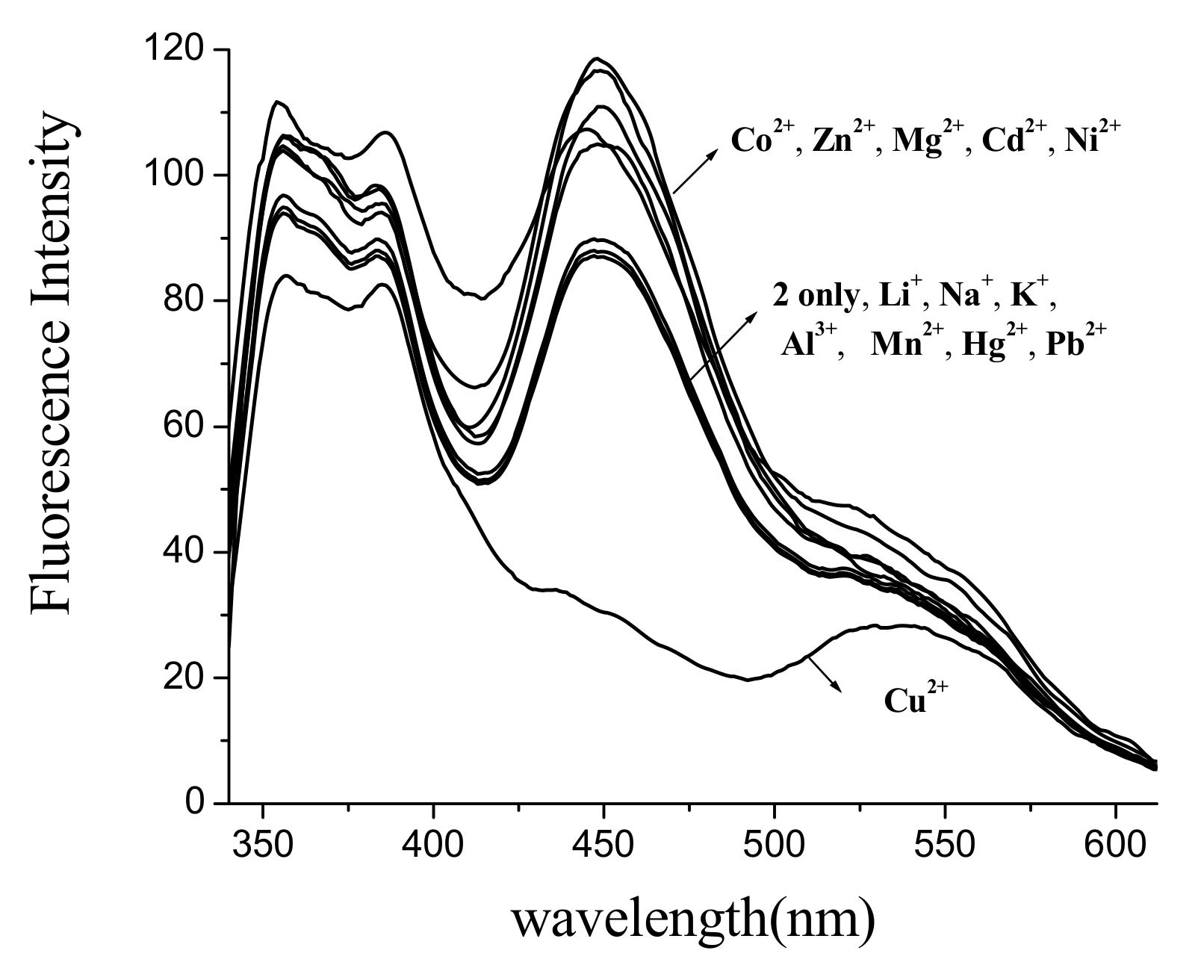
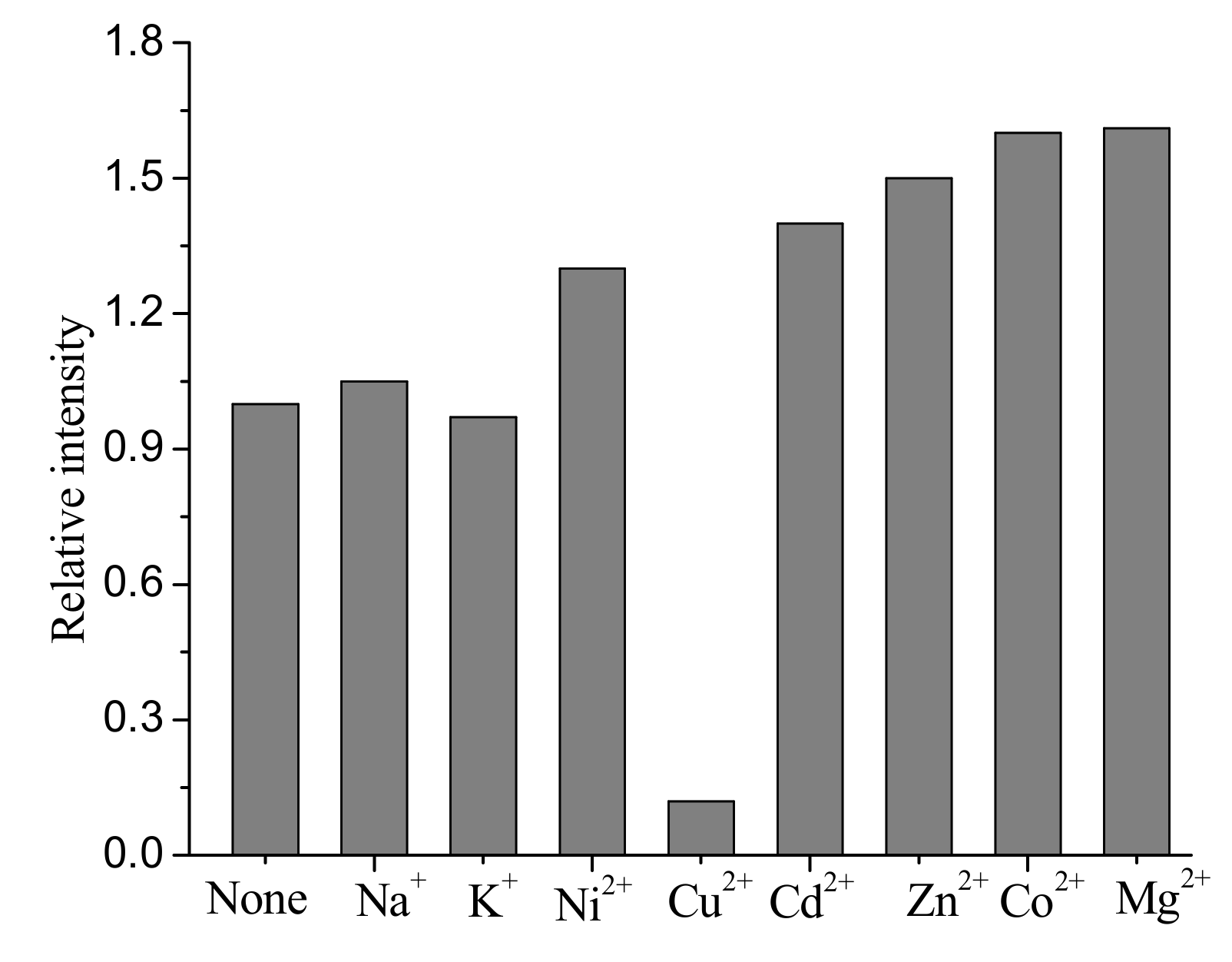
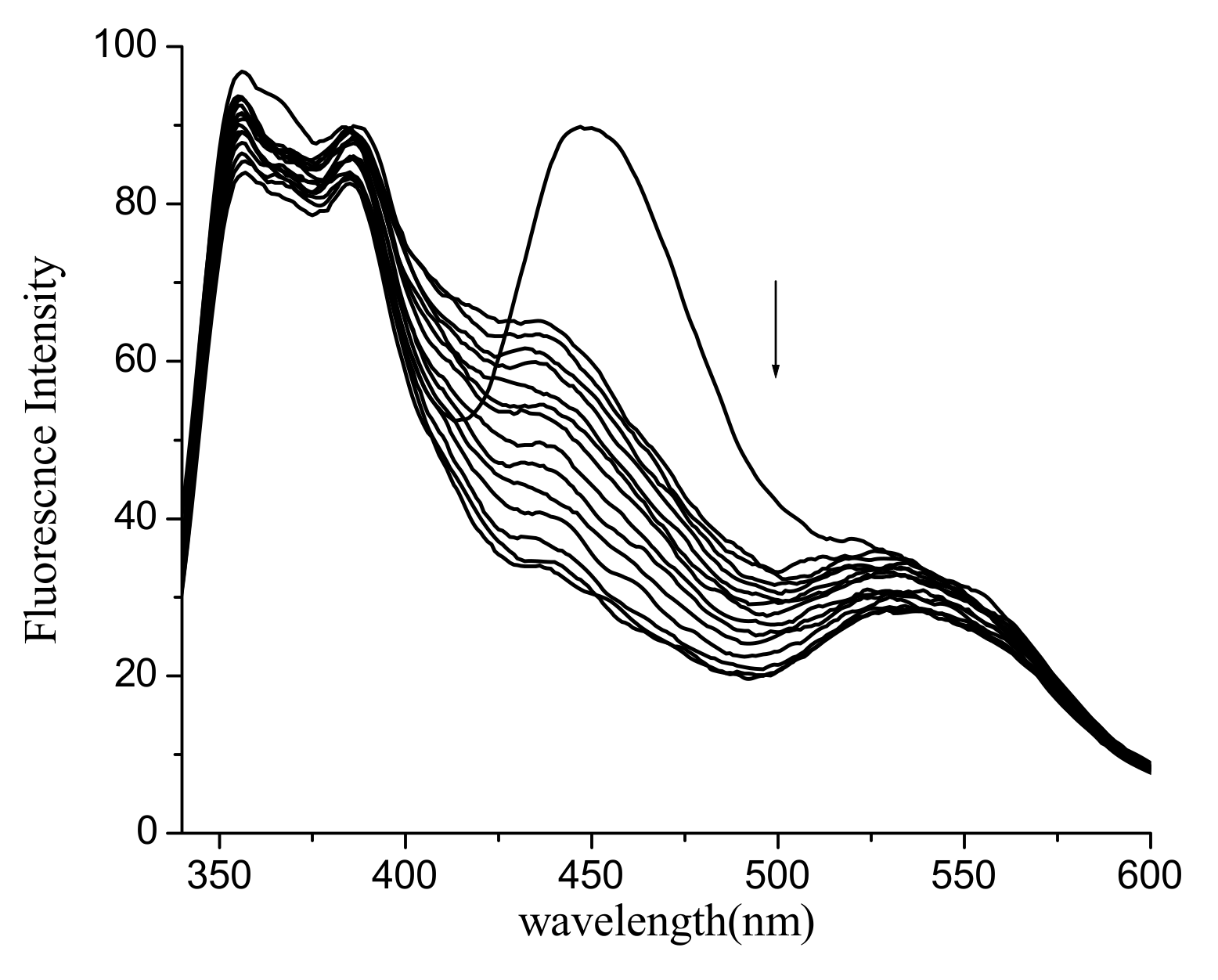
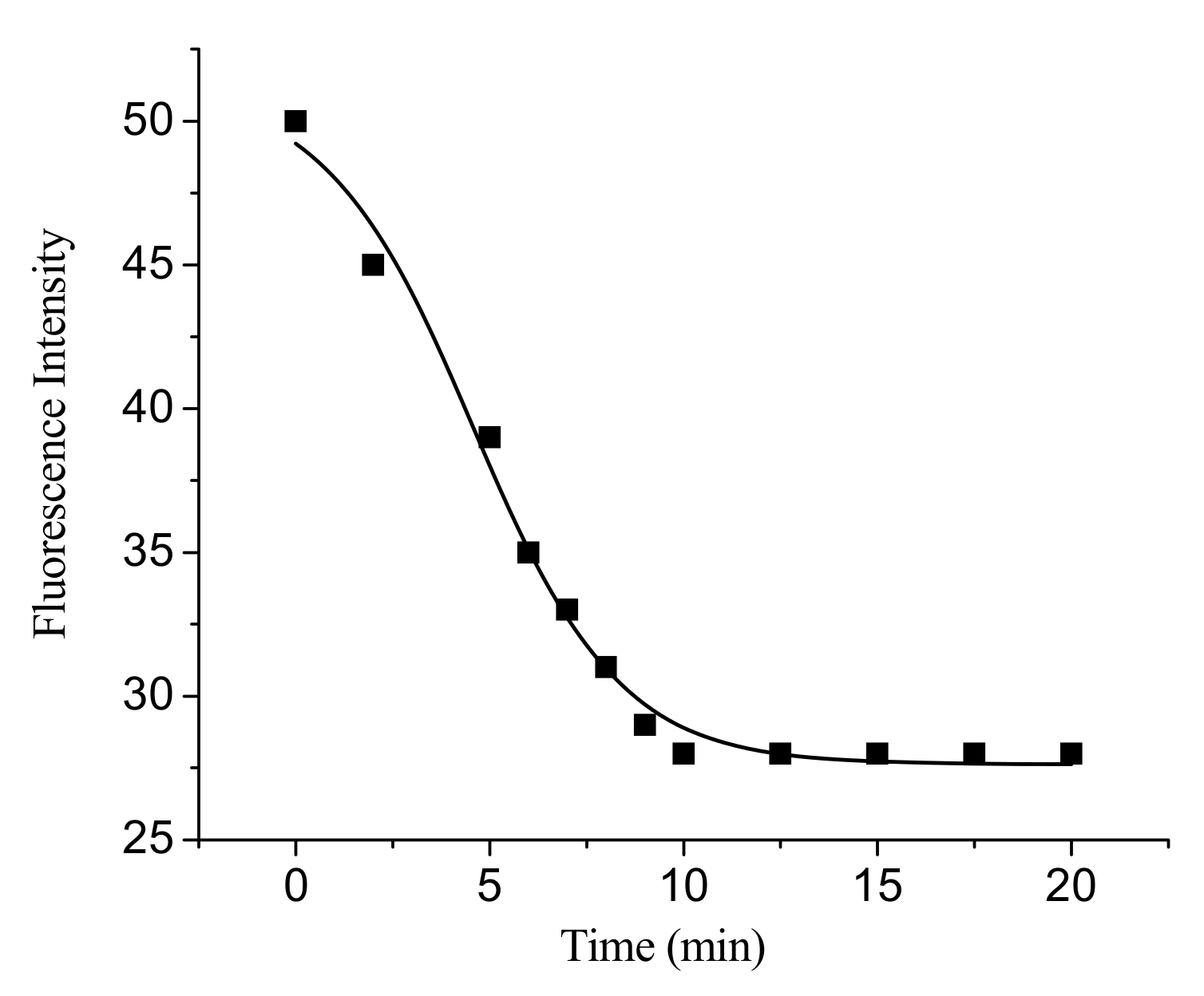
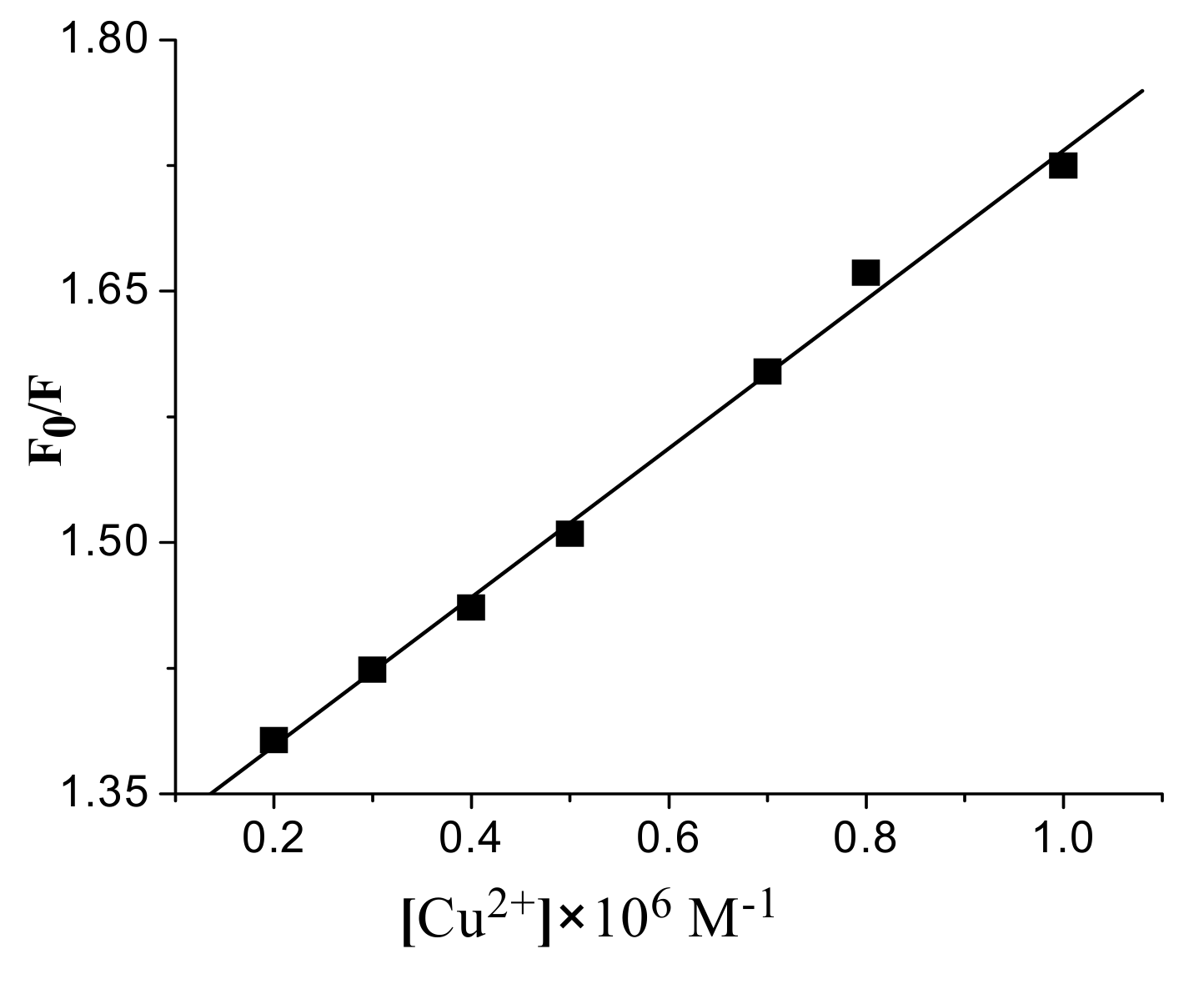
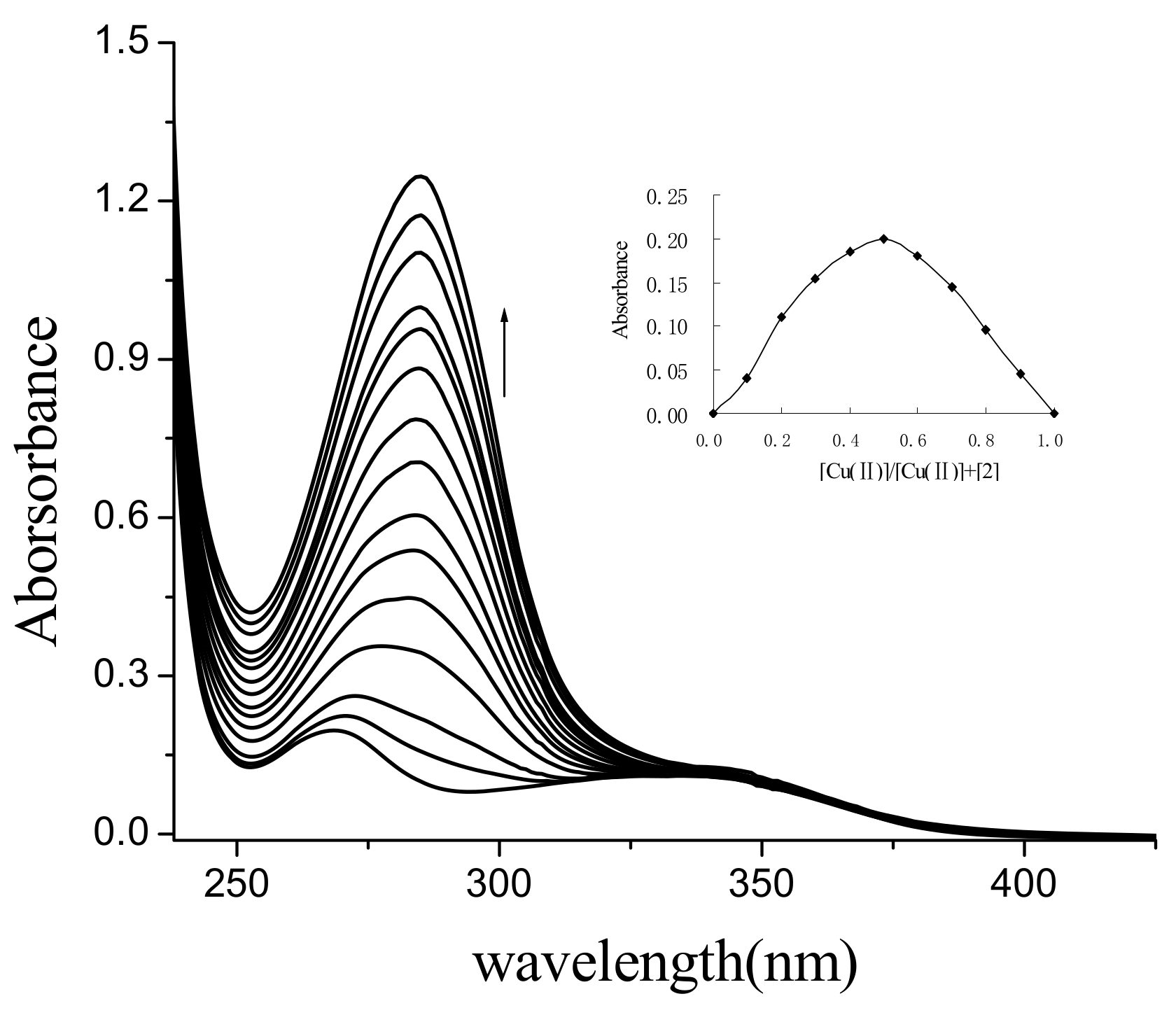
© 2010 by the authors; licensee MDPI, Basel, Switzerland. This article is an open access article distributed under the terms and conditions of the Creative Commons Attribution license (http://creativecommons.org/licenses/by/3.0/).
Share and Cite
Wang, Y.-C.; Liu, L.-Z.; Pan, Y.-M.; Wang, H.-S. Synthesis of a Dehydroabietyl Derivative Bearing a 2-(2′-Hydroxyphenyl) Benzimidazole Unit and Its Selective Cu2+ Chemosensing. Molecules 2011, 16, 100-106. https://doi.org/10.3390/molecules16010100
Wang Y-C, Liu L-Z, Pan Y-M, Wang H-S. Synthesis of a Dehydroabietyl Derivative Bearing a 2-(2′-Hydroxyphenyl) Benzimidazole Unit and Its Selective Cu2+ Chemosensing. Molecules. 2011; 16(1):100-106. https://doi.org/10.3390/molecules16010100
Chicago/Turabian StyleWang, Ying-Chun, Lu-Zhi Liu, Ying-Ming Pan, and Heng-Shan Wang. 2011. "Synthesis of a Dehydroabietyl Derivative Bearing a 2-(2′-Hydroxyphenyl) Benzimidazole Unit and Its Selective Cu2+ Chemosensing" Molecules 16, no. 1: 100-106. https://doi.org/10.3390/molecules16010100
APA StyleWang, Y.-C., Liu, L.-Z., Pan, Y.-M., & Wang, H.-S. (2011). Synthesis of a Dehydroabietyl Derivative Bearing a 2-(2′-Hydroxyphenyl) Benzimidazole Unit and Its Selective Cu2+ Chemosensing. Molecules, 16(1), 100-106. https://doi.org/10.3390/molecules16010100



